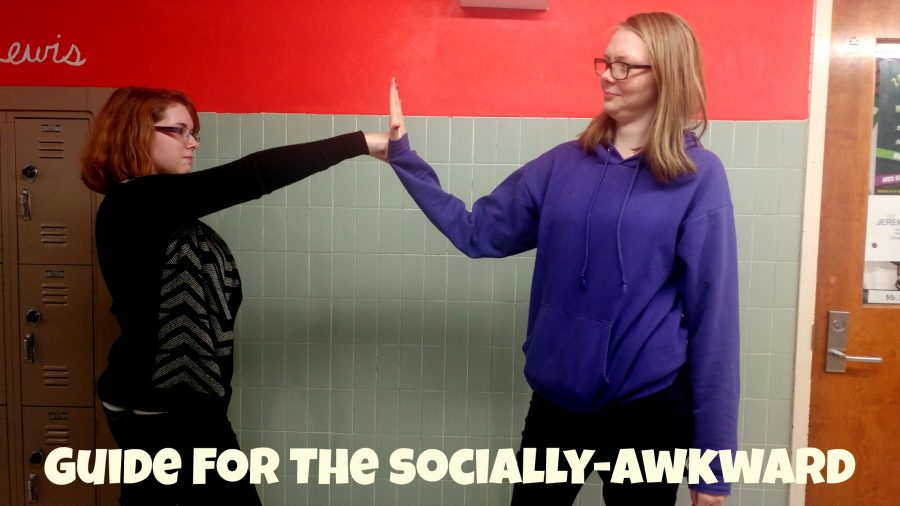A Guide for the Socially Awkward
February 8, 2017
In today’s society, we have become increasingly disconnected with the real world due to social media and technology, causing us to be more socially awkward and unable to engage in human interaction. So for this series (A Guide for the Socially Awkward) I compiled lists of easy, go-to steps to practice and rehabilitate ourselves everyday.
Step One: Smile.
Smiling is a sign of friendliness. Smiling makes one seem more approachable, and relaxes the person you are meeting.
TIP 1: You don’t need to pull out a dazzling one, if you can lift the corners of your mouth, that is fine too. And for some reason if you absolutely can’t smile, don’t feel so forced. You can show your friendliness by having a more enthusiastic voice or if you are sitting, leaning more towards the person (closing at a reasonable distance).
Step Two: Introduce yourself.
Not only is it the proper etiquette, introducing yourself will establish what the person should call you by in the future.
Step Three: Ask them for their name.
It’s polite, and you also will need to know what to call them by.
Step Four: Offer a handshake with a “Nice to meet you ___”
In the older days, a handshake is showing that neither person is holding a weapon. It is essentially the symbol of peace. Offering a handshake will create a more comfortable situation for you two, especially since it’s making physical contact.
TIP 2: Have a firm grip, something between not too strong and not too weak. Try not to aggressively shake or become limp, strive for a balance. A handshake usually should last around 5 seconds.
Step Five: Ask a question about the person.
The hardest step of all, however absolutely necessary in order to learn more about the person. Think about what you want to know, while keeping in mind to be respectful and relevant. Avoid asking too personal of questions right off the bat. Asking the best questions usually depends on the circumstances, but most of the time you can use the common courtesy “How was your day?” to start. And if you still can’t think of a question to ask, just find something to comment on. Use your surroundings, any kind of interesting small talk, or even compliment the person. Who knows? You might be able to become best friends with the person.
TIP 3: While talking or listening, make as much eye-contact as possible. It’s usually considered rude if you don’t, and making eye-contact makes you appear interested and engaged in the conversation.
Step Six: Talk about yourself as well.
Tell a little about yourself. Whatever you think sticks out about you or simple things like what grade you are in… Talk about whatever you are comfortable with sharing. Try not to burden the person with your life story or excess information, unless you truly think they need to know. Try avoiding touchy subjects like political or religious beliefs, and anything that might offend the other person. If you are a funny person, try making a joke; if you’re smart maybe tell them an interesting fact to spark a conversation.
Step Seven: Exchange Contact Information or Plan to Meet Again
Finally, after having talked for some time, the last step is to ask if you can meet/talk with that person again. Though that choice is entirely up to you and that person. After becoming antiquated, don’t forget to thank the person again for their time. If the conversation didn’t work out, don’t worry.
This is one of the many ways on how you can act while meeting someone new, however you can adapt to your tastes and style. After all, meeting people is supposed to be a natural thing and not expected to be bound by such formal rules (unless it’s for some sort of interview or business). These are only guidelines that you can use if you truly don’t know what to do. Other than that, being yourself is the most honest way of befriending someone new.
Next issue will be about “How to Succeed in Public Speaking” or “Meeting Someone from the Past”












